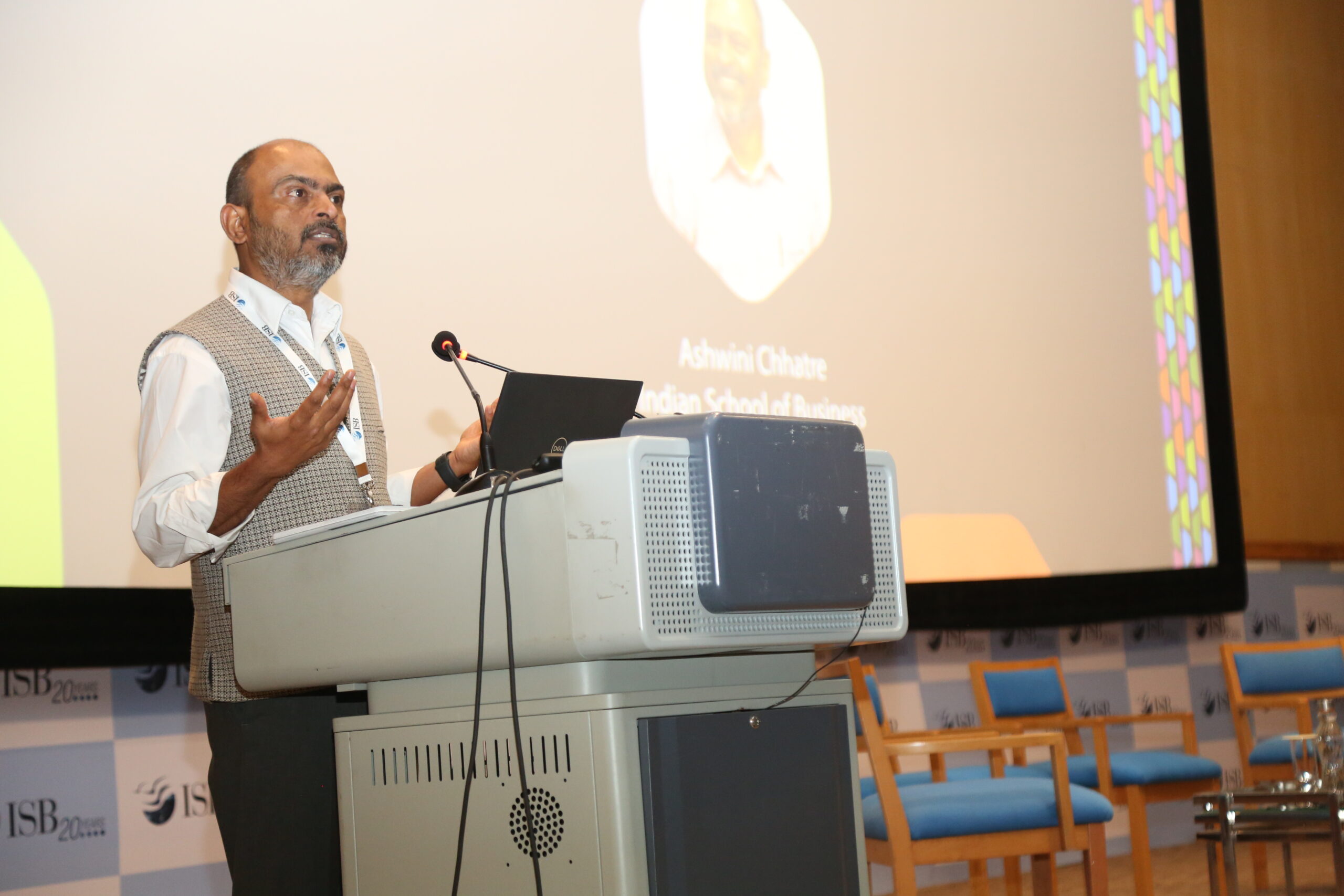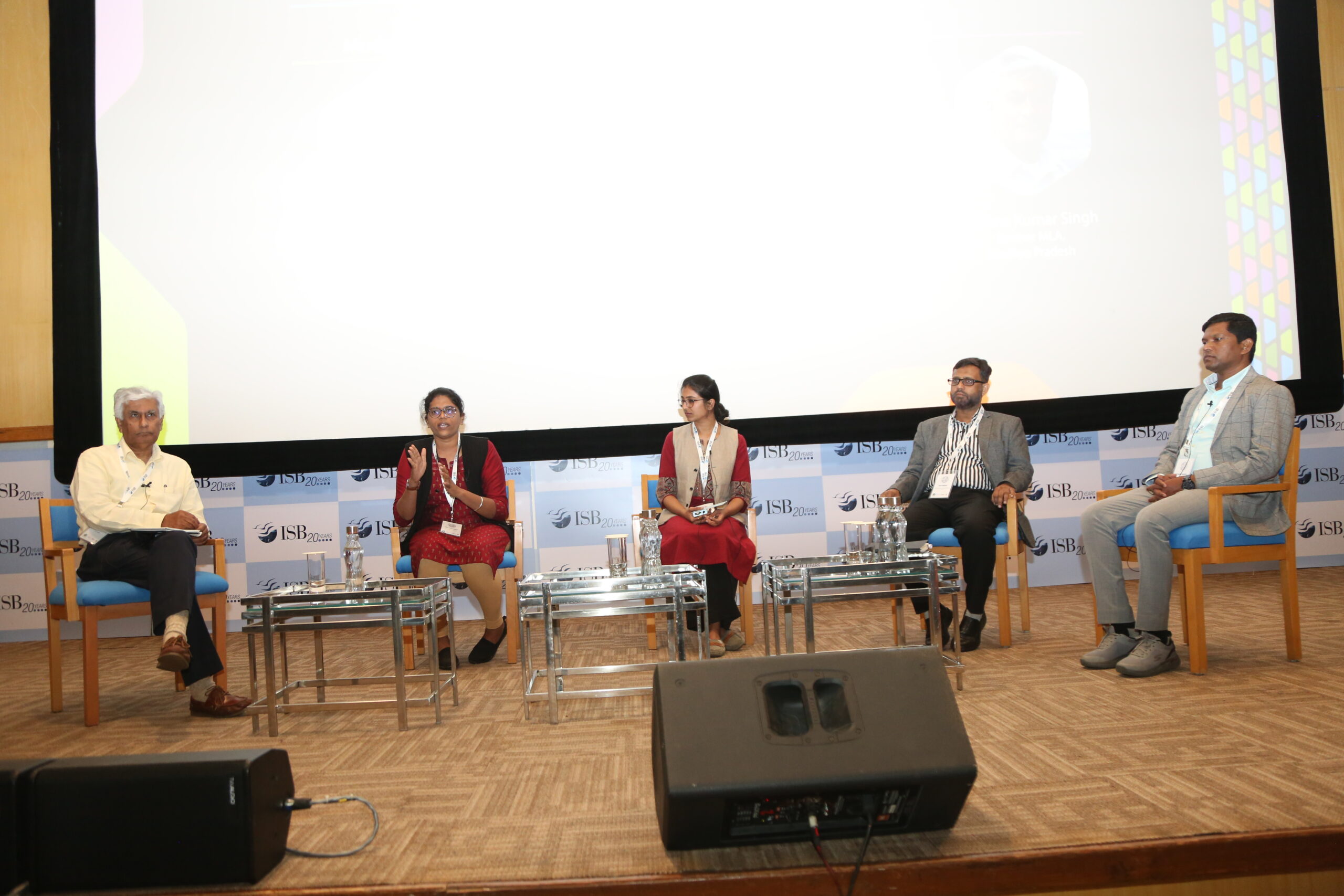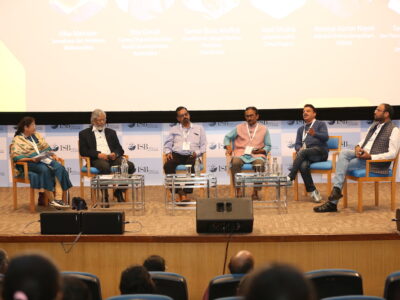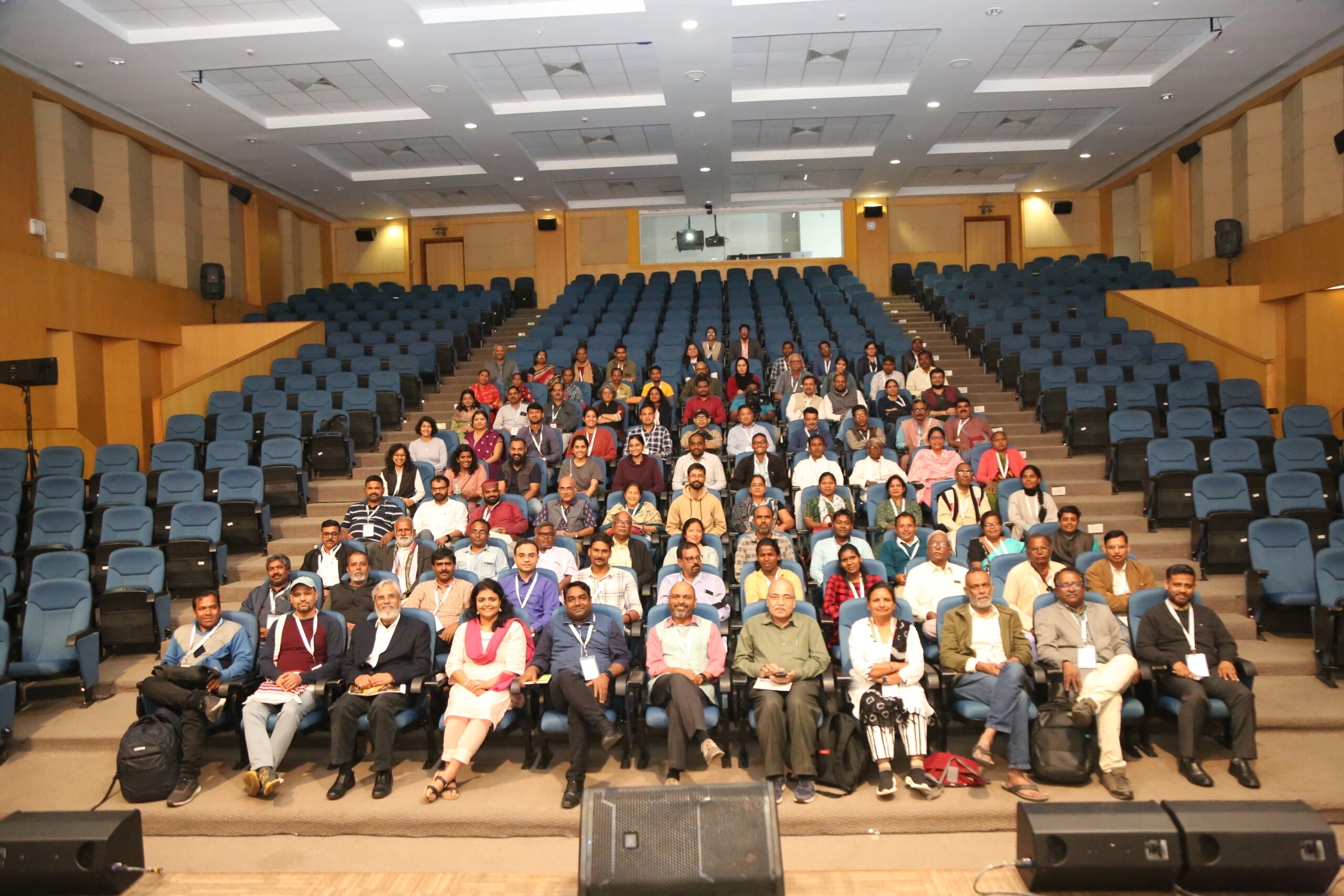ISB’s Initiative on Forest Economy is Technologically and Policy-wise Feasible

Professor Ashwini Chhatre is addressing the audience with his insightful thoughts during the inauguration of the Learning Exchange at ISB, Hyderabad.
Indian School of Business (ISB), in collaboration with SRUTI (Society of Rural, Urban, and Tribal Initiative) and Vasundhara, conducted a Learning Exchange on Forest Economy through Secure Tenure on December 21 and 22, 2022, at its Hyderabad campus. Industrialists, activists, lawyers, researchers, and bureaucrats across the country joined the event as panellists. These panellists shared their sector-specific experiences of working with communities, the challenges and opportunities of sourcing raw materials, and had cross-sector discussions about ways in which industry can play an important part in the initiative to reimagine the forest economy.
The two-day event started with the keynote address by Prof. Ashwini Chhatre, executive director of the Bharti Institute of Public Policy (BIPP), ISB. Prof. Ashwini Chhatre outlined a bold new vision of India’s Forest Economy Initiative, where empowered forest-dependent communities create wealth while also protecting and regenerating forests. The new initiative is technologically and policy-wise feasible with a multi-stakeholder approach. We are developing collaborations among industry, academia, government agencies, and civil society organisations to usher in this reimagined forest economy in India.
In India, there is an existing forest economy that is vast but continues to remain informal and invisible. More than 200 million people are dependent on the forest for their livelihood, most of whom are poor. This co-location of forests and poverty is, however, an opportunity to create wealth in a decentralised and distributive manner. Forest geographies act as productive spaces, and women-led community enterprises create wealth when forests are growing rather than when they are cut down. Currently, India’s forest-dwelling communities are poor but rich in knowledge. Industrial demand for SFPs should tap into the depth of communities’ traditional knowledge to ensure that supply can match market demand with visibility in the value chain.
In his keynote address, Prof. Chhatre emphasised on the following points:
- There is a strong motivation for India’s forest economy on both the demand and supply sides. There is also a growing appetite for seasonal forest products (SFPs) as raw materials in industries like pharmaceuticals, confectionery, cosmetics, alternative fuels, and several others.
- The future of the forest lies in the sunrise sector of packaging. The packaging and fertilizer industries are fossil-fuel dependent and are extremely carbon intensive. The forest can provide better alternatives to both sectors. The technology and policy tools required to build this supply chain are readily available. Designing apt business models and making strategic multistakeholder partnerships will unlock these value chains.
- Currently, the forest-dwelling communities of India are experiencing extreme poverty and a lack of access to basic amenities, but they possess rich traditional knowledge. Their knowledge and labour have been continually exploited by the informal economy. This economy primarily runs on poor wages and unfair pricing of forest produce collected by these communities. Industrial demand for SFPs should tap into the depth of this traditional knowledge and ensure that a sustainable supply can match the market demand as well as get visibility in the value chain. To ensure the sustainability of the forest and supply chain, the forest economy has three pillars: (a) Security of Tenure, (b) Economies of Scale, (c) Market Linkage
- SFP collectors, who are primarily women of the community, are further invisible in the existing forest economy. The collection of SFPs happens at an individual scale, and collectors continue to use outdated tools for collection and processing. Both informality and small scale restrict the communities from tapping into economies of scale, which are key to the economic viability of selling seasonal forest produce. Any mechanisation requires the aggregation of large quantities. Economies of scale are then definitively achievable at the landscape level, where supply chain aspects like value addition through mechanisation become feasible. Industrial jobs are created while cutting down on transportation time and costs. Conclusively, women will be able to access and receive an equitable valuation of their products without undergoing physical drudgery.
Prof. Chhatre concluded with a futuristic vision of hope, saying, “We will certainly require a lot of experimentation and face many challenges along the way, but it is about time to bring all the stakeholders together and invest in communities to create jobs and public goods at scale.” “The future of the forest is going to be different from what it is today, and we need to collectively reimagine the forest and its relationship with the forest dwellers and the Indian economy at large.”



